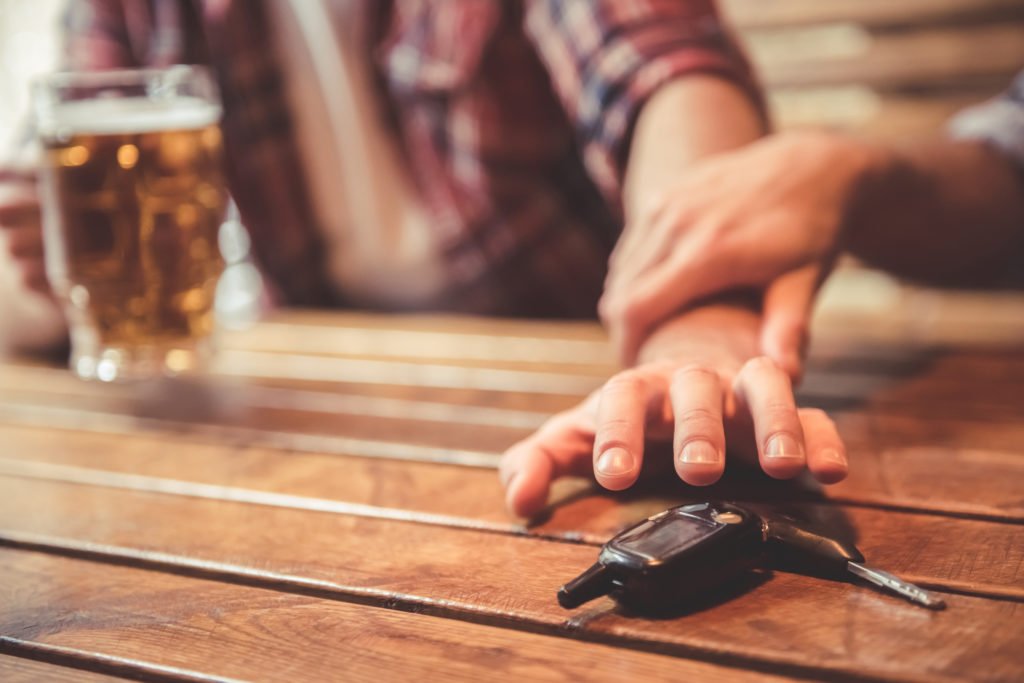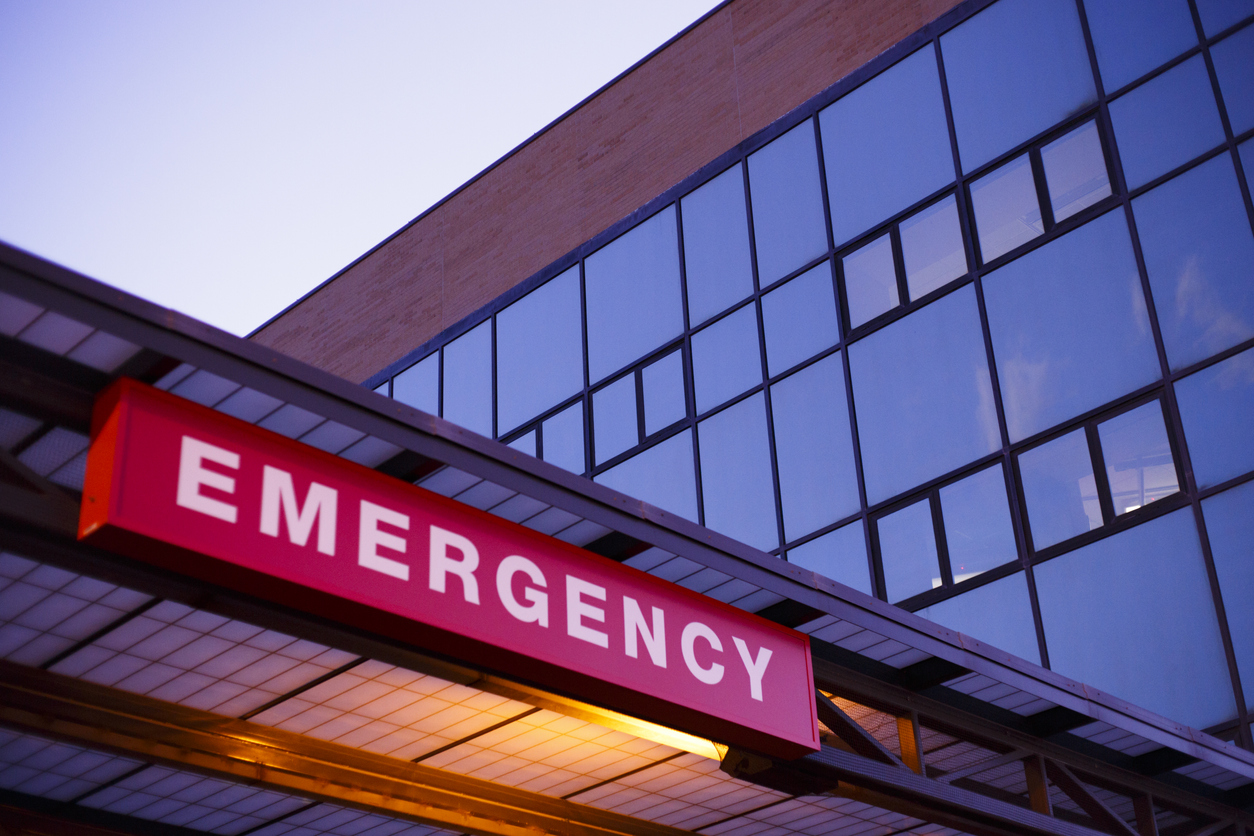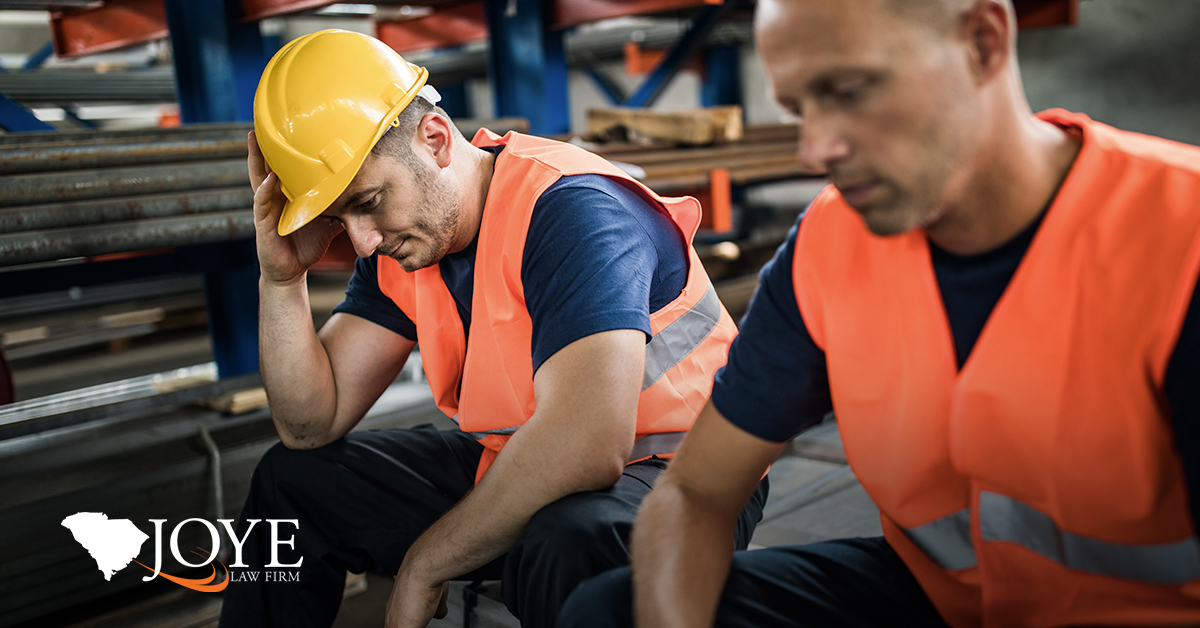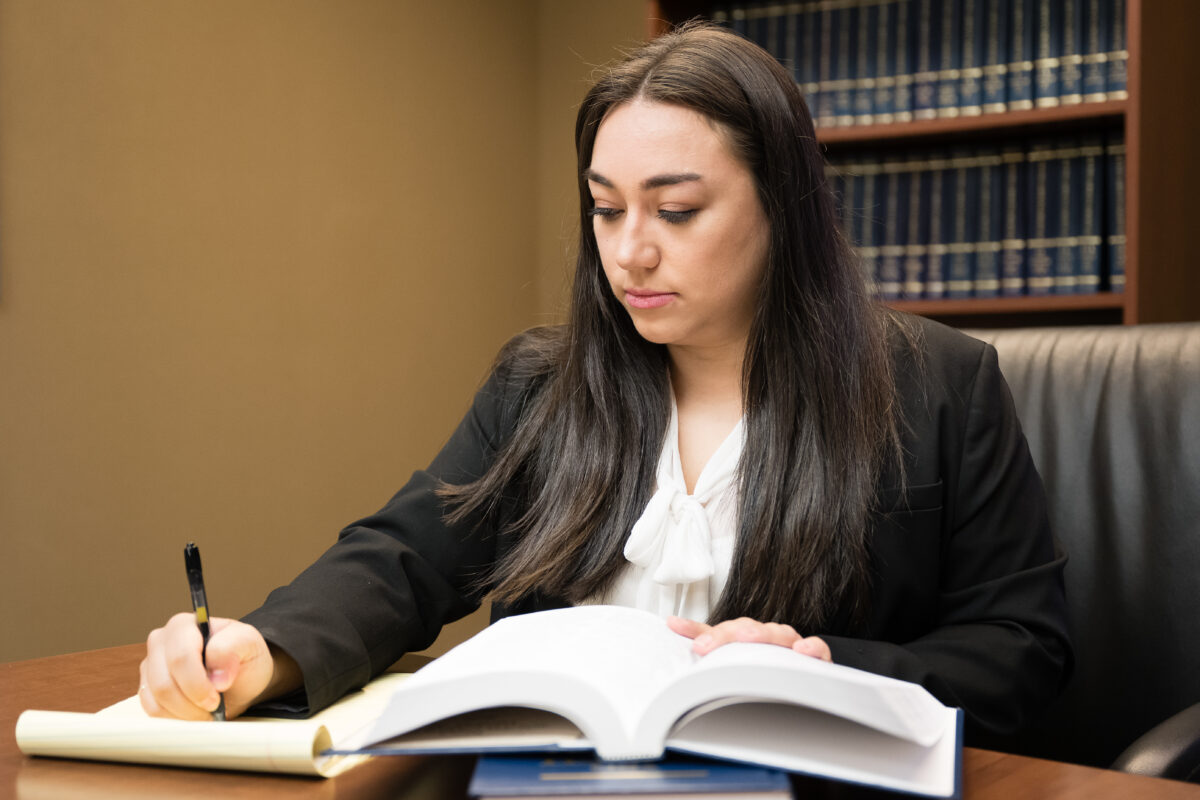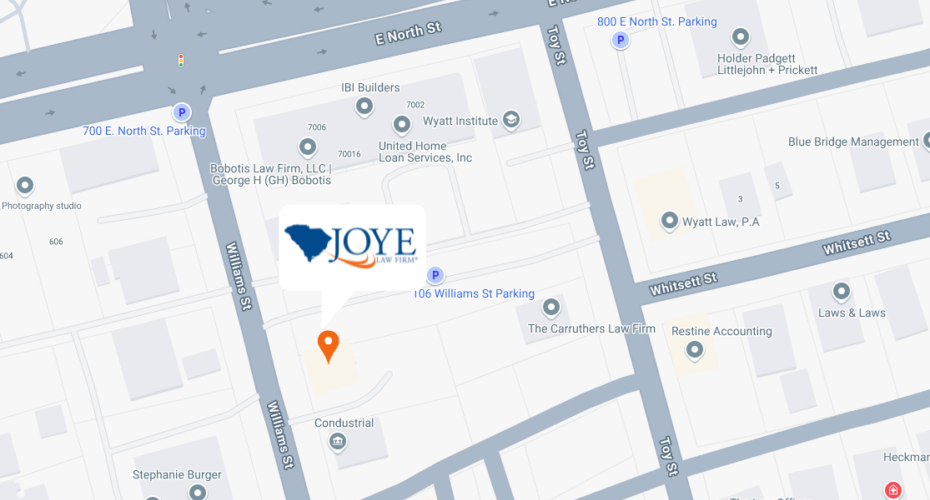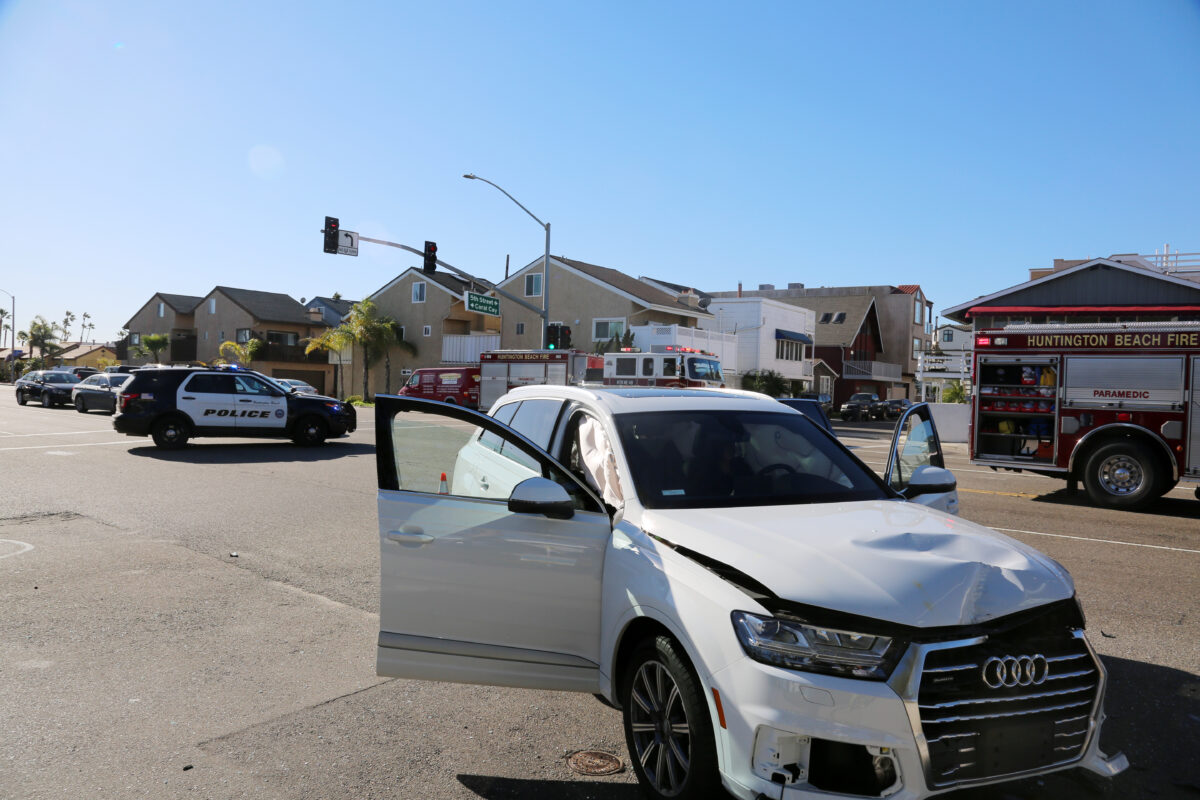
When Amy left church one Sunday morning in Goose Creek, she never imagined that she and her 4-year-old son would soon become the victims of a serious wreck. As she proceeded through the intersection of St. James Avenue at Old Moncks Corner Road, a drunk driver ran a red light and T-boned the driver’s side of her car. The impact caused severe herniation in her cervical spine. Despite treatment with injections and physical therapy, she was forced to undergo spine surgery over a year and a half later.
Thankfully, Amy knew she didn’t have to deal with the stress of determining fault or negotiating with insurance companies alone. She called the Joye Law Firm for legal representation. Attorney Brent Arant took on her case and, through strategic negotiation, was able to secure a $1.18 Million settlement for the young mother.
A T-bone accident, also known as a side-impact collision or broadside accident occurs when the front of one vehicle crashes into the side of another, forming a “T” shape.
The sudden impact, the sound of crunching metal, and the potential for severe injuries can leave you feeling overwhelmed and unsure of what to do next. The good news is, you don’t have to go it alone. A South Carolina car accident lawyer from Joye Law Firm can protect your well-being and legal rights.
Understanding Your Role in a T-bone Accident
After being T-boned, you’re probably reflecting on the moments leading up to the collision. As a responsible driver, you likely took necessary precautions to ensure your safety and the safety of others on the road.
When assessing liability, your lawyer will consider the following factors:
- Right of way: At the time of the accident, were you proceeding through the intersection according to traffic laws and signals? If you had a green light, a green arrow, or the right of way at a stop sign, you were legally entitled to proceed through the intersection.
- Lawful entry into the intersection: Did you enter the intersection only when it was safe and had complied with all traffic rules? If you did not attempt to beat a red light, run a stop sign, or make any illegal maneuvers, you likely acted within the bounds of the law.
- Safe speed: Did you travel at a speed appropriate for the road conditions and the posted speed limit? Maintaining a safe speed can reduce the risk of accidents and ensure sufficient time to react to potential hazards.
- Attentiveness behind the wheel: Were you focused on driving, keeping your eyes on the road, and your hands on the wheel? Minimizing distractions, such as phone use or interactions with passengers is crucial. Maintaining situational awareness allows you to react promptly to changing traffic conditions.
Your attorney will examine the other driver’s actions and how they may have contributed to the collision.
In many cases, the primary cause of a side-impact accident is the other driver’s negligence or recklessness, especially when you did your part to prevent the incident.
The Other Driver’s Actions That Led to the Collision
While you followed the rules of the road and drove responsibly, the other driver engaged in behavior that put you and others at risk.
Consider the following factors:
- Failure to yield the right of way: The other driver may have failed to yield the right of way when required by traffic laws or signals. For example, they may have turned left in front of you when you had a green light or pulled out from a side street without checking for oncoming traffic.
- Running a red light or stop sign: The other driver may have deliberately or accidentally run a red light or stop sign, entering the intersection when it was not their turn. This reckless behavior directly led to the T-bone collision.
- Distracted driving: A phone, passengers, or other activities may have distracted the other driver. Distracted driving causes many accidents and can significantly impair a driver’s ability to react to changing traffic conditions or avoid hazards.
- Speeding: The other driver may have broken the speed limit, making it difficult for them to stop in time to avoid the collision. Speeding or traveling too fast for conditions reduces a driver’s reaction time and increases the severity of accidents when they do occur.
- Driving under the influence: Alcohol, drugs, or prescription medications may have impaired the driver’s judgment and ability to operate a vehicle safely. Driving under the influence is not only illegal but also puts everyone on the road at risk.
By engaging in these dangerous behaviors, the other driver directly caused the T-bone accident that left you dealing with the consequences. Recognize that their actions, not yours, led to the collision. You should not bear the blame or consequences for the incident.
Gathering Evidence for Your T-bone Accident Case
 After a car accident, your mind may race with questions and concerns about what to do next. One of the most important steps is gathering evidence to support your case and protect your legal rights.
After a car accident, your mind may race with questions and concerns about what to do next. One of the most important steps is gathering evidence to support your case and protect your legal rights.
By documenting the accident scene and collecting relevant information while it’s still fresh, you can build a strong foundation for any potential insurance claims or legal proceedings.
Here are some key actions to take after a wreck:
- Contact the police: Call the police to report the accident. The responding officer will create an official report detailing the incident, the parties involved, and any citations issued. This report can help your attorney build your case. Be sure to obtain a copy for your records.
- Document the damage: Use your smartphone camera to take photos and video of the damage to your vehicle and the other driver’s vehicle. Be sure to capture the point of impact and any skid marks or debris on the road. This evidence can help illustrate the severity of the collision and will provide context for how the accident occurred.
- Photograph the scene: Besides documenting the vehicle damage, take pictures of the accident scene. Include photos and video of traffic signs, signals, and road conditions that may have contributed to the collision. These can help paint a clearer picture of the circumstances surrounding the accident.
- Gather witness information: If witnesses saw the accident, try to collect their contact information before they leave the scene. Witness statements can provide valuable insight into how the accident unfolded, and can help corroborate your version of events. Witnesses may also have dash cam or security footage that can further prove who was at fault for the collision.
- Inquire about traffic camera footage: Depending on the location of the accident, traffic cameras may have captured the incident. Contact local authorities or the Department of Transportation to inquire about the availability of this footage, as it can provide an objective view of the collision.
- Keep track of essential documents: Begin organizing any medical records, repair bills, or other documentation related to the accident. These records can demonstrate the extent of your damages and the impact the incident has had on your life.
By following these steps, you can support your case. Your attorney will need this information as they work to protect your rights as the victim of a collision that was not your fault.
What You Need to Know About Dealing with Insurance Companies
After a T-bone accident, you will need to interact with insurance companies to report the incident and seek compensation for your damages. Taking the proper steps and using caution can protect your interests and ensure a fair outcome.
Reporting the Accident to your Insurance Provider
Notify your insurance company about the accident immediately. Provide them with the basic details of the incident, including the date, time, location, and the other driver’s insurance information. The police officer who responded to your collision will also give you a green FR-10 form to verify your insurance coverage. This must be completed by your insurance company and returned to the DMV within 15 days of your accident.
Your insurance company will assign a claims adjuster to your case, who will guide you through the claims process.
Providing Evidence to Support Your Car Accident Claim
Share the evidence you gathered at the accident scene with your insurance company, including the police report, photos of vehicle damage, witness statements, and video footage, if available.
This evidence will support your claim and demonstrate the other driver was at fault.
Be Cautious with the Other Driver’s Insurance Company
The other driver’s insurance company may contact you for a statement about the accident. Be cautious when speaking with them, as they may use your words against you to minimize their policyholder’s liability.
Stick to the facts, and avoid admitting fault or apologizing for the incident. Better yet, don’t talk to them at all until you’ve spoken with a lawyer.
An experienced car accident attorney can help you safely navigate the insurance claims process. We will negotiate with insurance companies on your behalf and help you receive fair compensation for your damages.
Remember that insurance companies are businesses that aim to minimize their financial losses. The other driver’s insurer may attempt to shift blame or downplay the severity of the incident to reduce their payout.
By being proactive, hiring a car accident lawyer, providing strong evidence, and being cautious in your interactions with insurance companies, you can ensure your claim is taken seriously.
Overcoming the Aftermath of the Crash
In addition to dealing with insurance companies and legal matters, you may be facing other challenges as you work to overcome the incident’s aftermath. These can come in the form of physical pain, emotional distress, and financial hardship.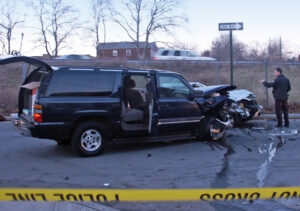
Here’s what you need to know:
- Make your health and well-being your top priority after a side-impact accident. Even if you don’t feel hurt immediately after the collision, seek medical attention. A thorough exam can rule out any underlying injuries, such as whiplash, concussions, or internal bleeding. Follow your doctor’s advice, and attend all follow-up appointments to ensure a full recovery.
- Being involved in a serious car accident can lead to feelings of anxiety, fear, or even post-traumatic stress disorder (PTSD). Don’t hesitate to seek support from friends, family, or mental health professionals as you work through the emotional aftermath of the incident. Self-care activities like exercise, meditation, or hobbies can help you manage stress and promote emotional well-being.
- Depending on the severity of the damage to your vehicle, you may need to repair or replace it. Work with your insurance company to determine the best action and to secure a rental car, if possible. If your vehicle is a total loss, your insurance company will provide you with a settlement based on the fair market value of your car. Use this settlement to purchase a replacement vehicle that meets your needs and budget.
- It’s always a good idea to seek legal counsel after a car crash involving significant damages and injuries. The other driver’s insurance company will not make it easy. They will likely lowball you or may refuse to cooperate completely. An experienced car accident attorney can help you with the legal process, gather additional evidence, and negotiate with insurance companies on your behalf. They can also represent you in court if a lawsuit becomes necessary to protect your rights and secure the compensation you deserve.
Be patient and take things one step at a time. Surround yourself with a supportive network of family, friends, and professionals who can help you confidently move forward.
Talk to a South Carolina Car Accident Lawyer About Your Case Today
As you work to protect your well-being and legal rights, consider contacting our experienced professionals. Your legal team can help you understand your options and will advocate for your best interests.
The compassionate and knowledgeable South Carolina personal injury lawyers at Joye Law Firm have been dedicated to helping individuals like you since 1968. Remember, you can take control of your situation by seeking the support you need to move forward confidently.
We take cases across the state and have offices conveniently located in Charleston, Columbia, Myrtle Beach, Summerville, and Clinton. If you can’t come to us, we’ll gladly come to you. We understand that being involved in a car wreck can turn your world upside down. That’s why we offer our clients our exclusive No Fee Guarantee, meaning we will advance all of your case’s expenses and you won’t owe us anything unless we win your case.
Just Call Joye today at 888-324-3100 for your free consultation, and learn more about how we can protect your rights and secure the best possible outcome for your case.




